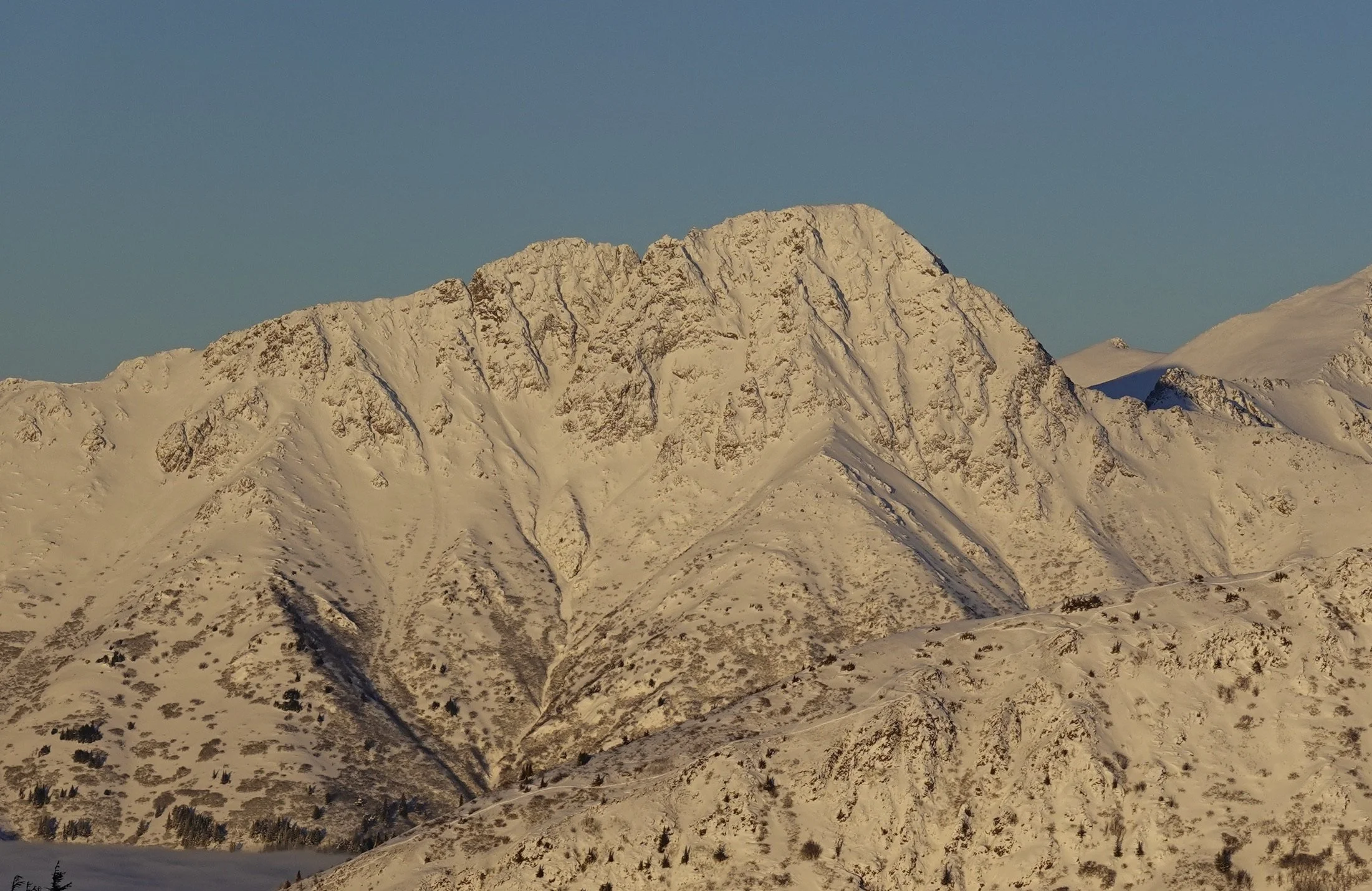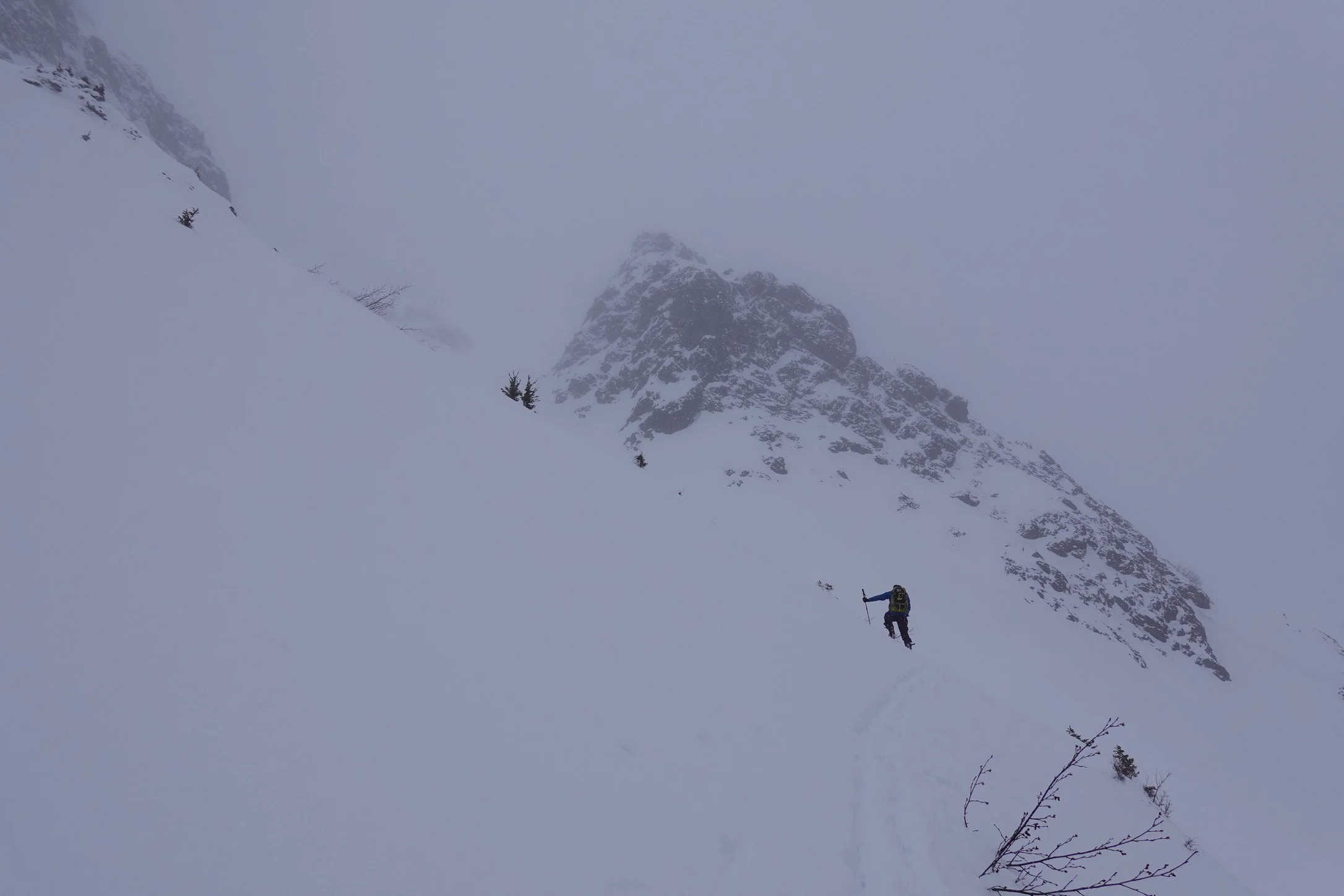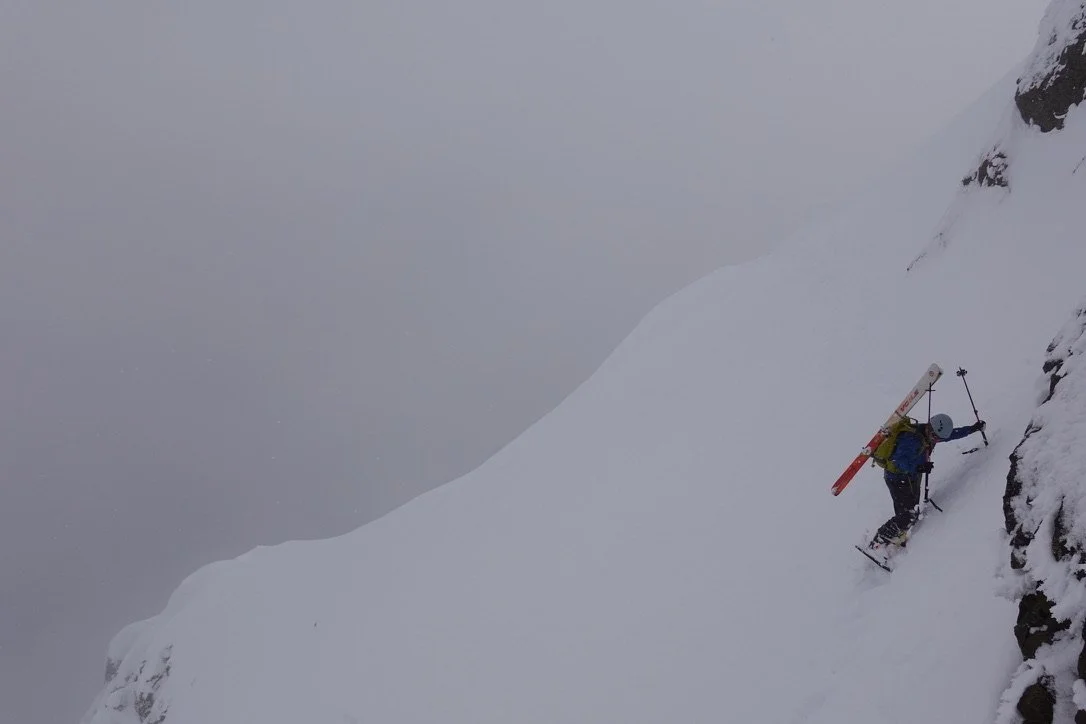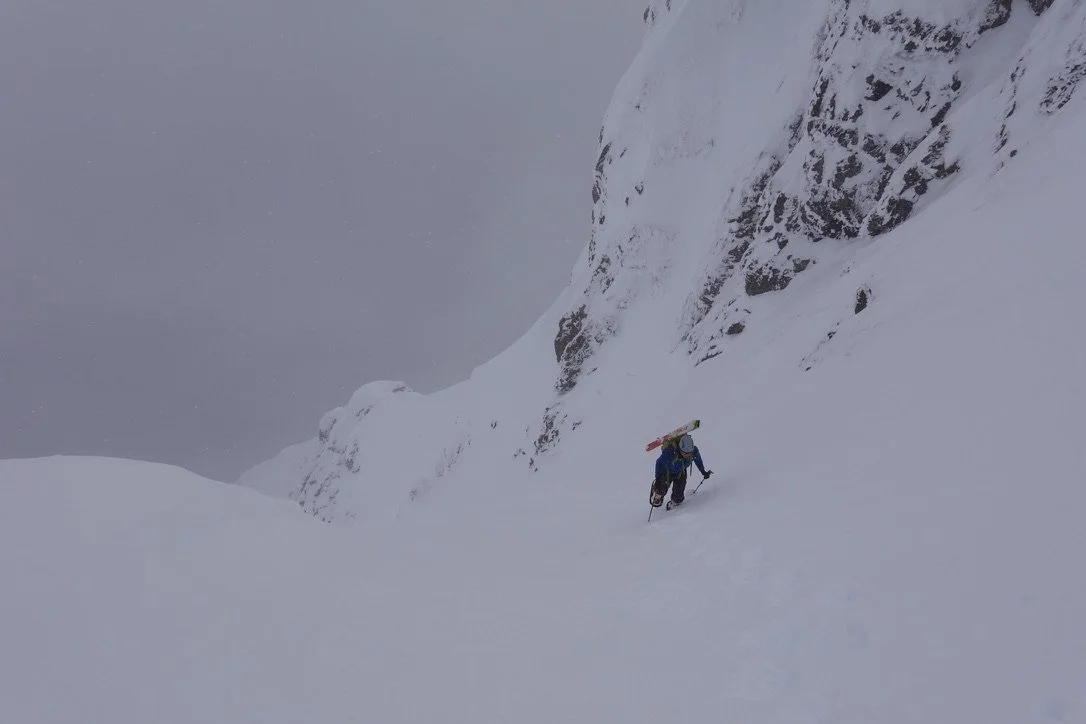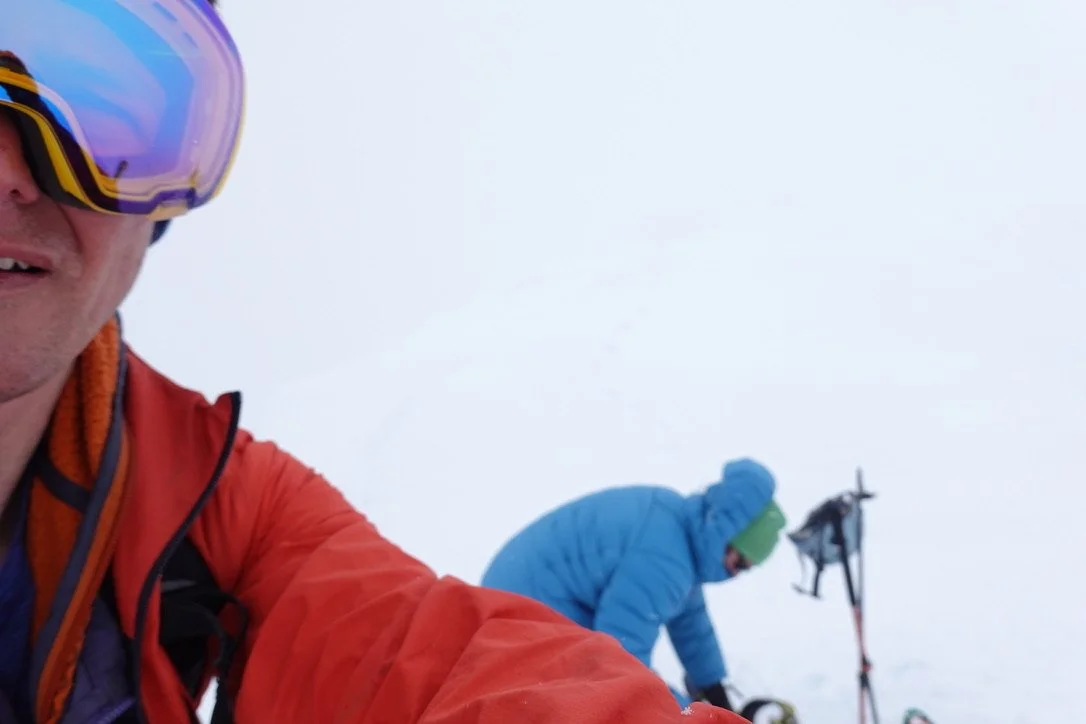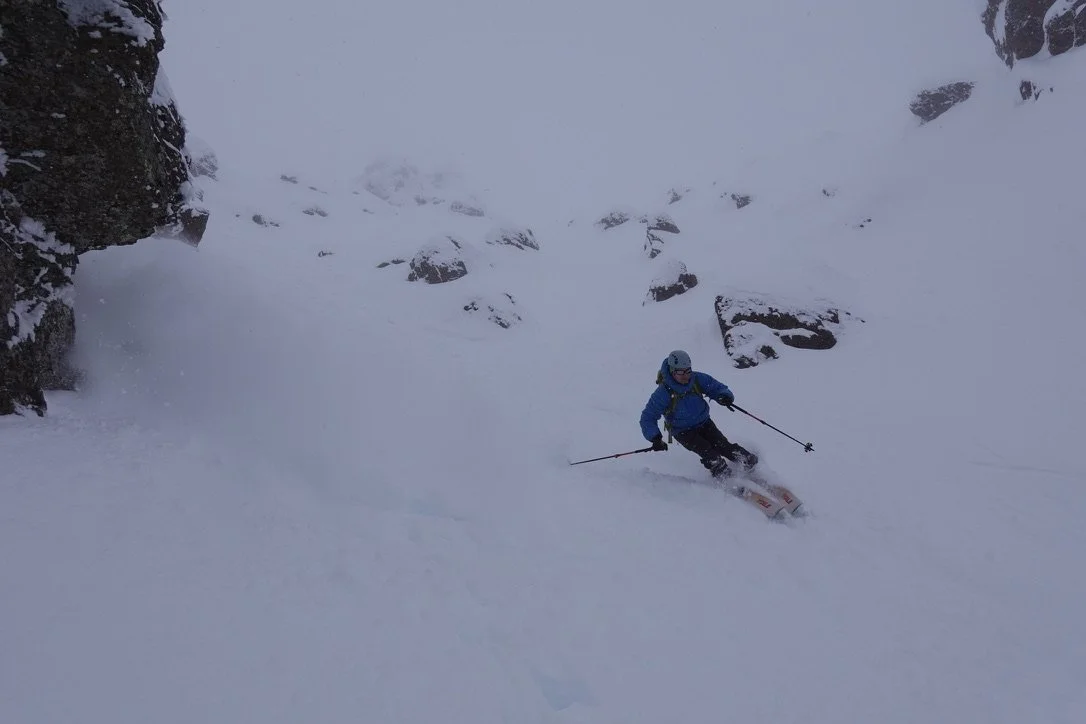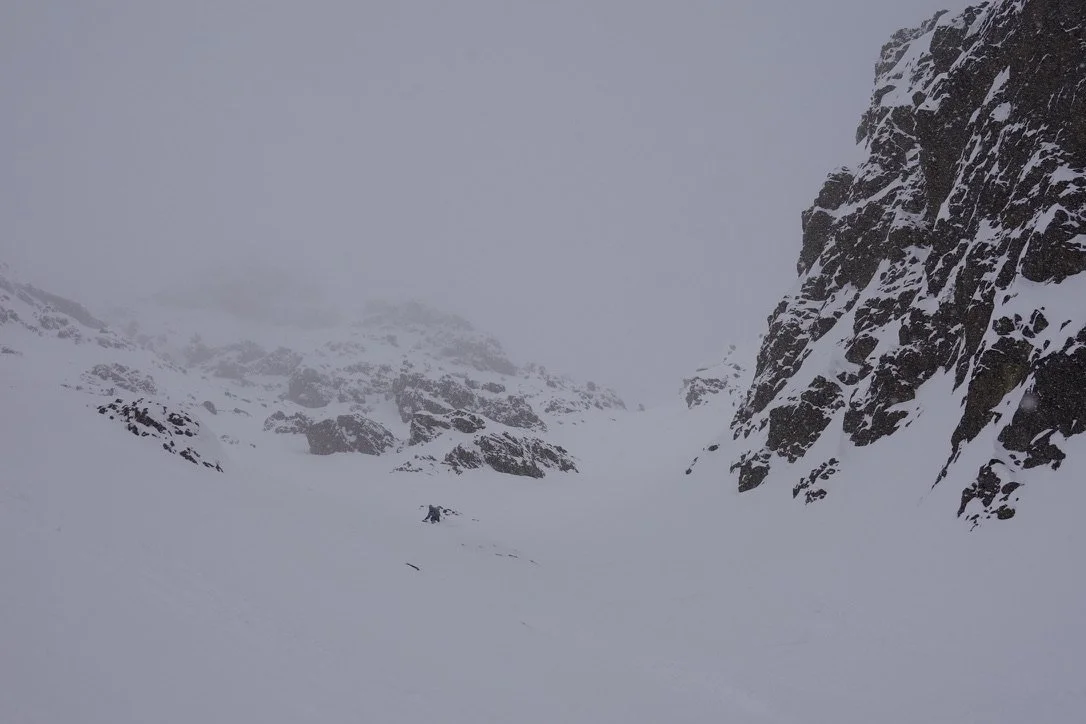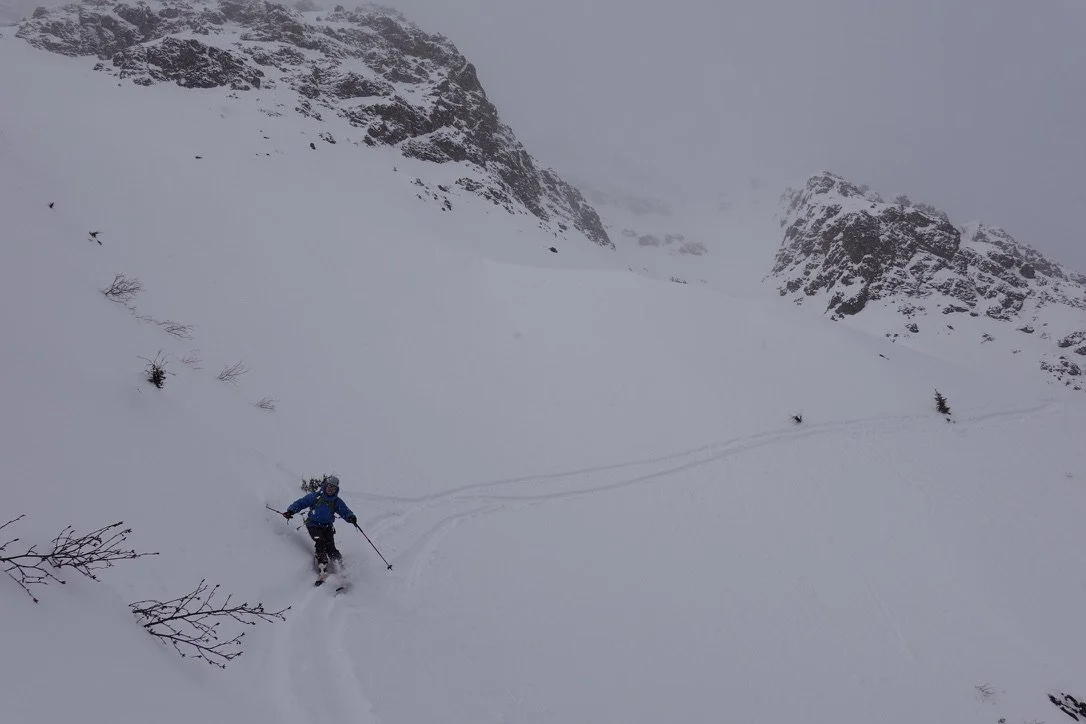I spend a lot of time on the road between Anchorage and Turnagain Pass in the winter months. Indianhouse peak has always caught my eye when returning home along the arm, and despite skiing on its flanks for years, and one heinous bushwack from an attempt at a alternate approach last year, I was not able to actually get all the way up it to ski off until the 21-22 winter. Good snow and a great partner made for an excellent experience.
Midwinter light on the East face of Indianhouse
On March 12 Dana and I began hiking up from the Seward Highway, skis on our backs due to intermittent snow and dirt. At about 1,300’ we maneuvered around a lone moose, put our skis on our feet, and started skinning uphill. This would be one of the many transitions we would make between booting, skinning, and ascent plates on the way up. The ascent plates proved invaluable on this excursion, with Dana’s homemade prototype Vert bindings not just surviving but thriving on the trip.
Dana D on the way up.
Near 2,800’ we traversed right below the East face, aiming for a large couloir heading for the summit. Clouds surrounded us, visibility decreased, and we pointed ourselves uphill. Our ascent and descent line ended up being lookers right of where the main ascent couloir is. The complexity of the terrain, our unfamiliarity with it, and the low viz gave us the opportunity to explore.
Traversing out onto the East face
Lightweight setups precluded the use of ice axes or crampons. Verts and ski poles plunged into the snow upside down provided plenty of security for some of the traversing terrain. We generally just followed our noses on the way up.
Vert Traverse!
Upper sections on East Face, still some visibility.
Neither of us had been to the top before. Despite coming to a high point and not seeing anything else to climb, we double checked the GPS that we were actually on top. Visibility was minimal at this point. Nothing left to do but ski downhill now.
Hastily snapped summit pic
Most of the upper section involved skiing shorter pitches, working back on the traverses by carefully sidestepping, and navigating in the flat light. Great snow up there, and we couldn’t see what was below us with the visibility so we had nothing to worry about concerning exposure.
Dana skiing on the upper section of the face
The lower section of the face was more straightforward and we were able to open it up a bit and have more fun on the less exposed terrain. Eventually we got down to about 3,000’ and had to do the long traverse back to the ascent ridge, which we followed down through denser snow, corn, and finally the exposed dirt and tundra.
Despite some terrain hazard and a somewhat convoluted approach, the East face of Indianhouse is an excellent ski with plenty of options. When conditions are right it is worth the effort.
Coming down the lower couloir.
Long traverse below the East face back to the ridgeline.

